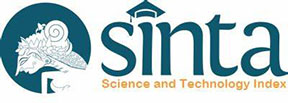STUDY ON CHARACTERISTICS OF LAND AREA REFUGEE RELOCATION ERUPTION SINABUNG KARO DISTRICT AS A BASIS FOR LAND USE BASED WATERSHED MANAGEMENT
DOI:
https://doi.org/10.32734/jopt.v2i1.2879Keywords:
relocation Sinabung, land characteristics, watershed managementAbstract
Study of the characteristics of the land in the area of refugee relocation eruption of Mount
Sinabung intended as a basis for the use of land-based watershed management in the region
has been carried out in November and December 2014. The study was conducted using a
survey at the site which is administered in the village of Nagara, Pertibi Lama and Pertibi
Tembe Tiga Panah Sub District Karo District. Field observations carried out on the physical
characteristics of the land and soil sampling for laboratory testing of physical, chemical and
biological soil. The study also conducted bassed secondary data sourced from the analysis of
various thematic maps such geological maps, soil type maps, topographic maps and maps of
watershed areas. The results showed that the area of Mount Sinabung relocation is in the
upstream region of two important watersheds in North Sumatra and Aceh, which Wampu
Watershed and Singkil Watershed, the dominant topography sloping to undulating located at
a height of more than 1,550 m above sea level. Land in refugee relocation sites Sinabung
classified into subgroups Andic Dystropept which has properties (smeary or
thixotropic), the soil is very loose (BD <0.8 g / cm3) and high content of organic matter in the
upper layers of the soil pH suitable for upland crops, and the number (population) microbes
are also high.






















